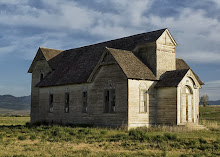

The Tudors have always been interesting to me and here is something Tudor-related by way of Henry the Eighth; the maze at Hampton Court. Here is information from wikipedia about the maze:
from wikipedia
"Hampton Court maze is a hedge Maze; planted sometime between 1689 and 1695 by George London and Henry Wise for William III of Orange at Hampton Court Palace. The maze covers a third of an acre and contains half a mile of paths. It is possible that the current design replaced an earlier maze planted for Thomas Cardinal Wolsey. It was originally planted with hornbeam, although it has been repaired using many different types of hedge.
A diagram of the maze's layout and the correct path to the centre.
The maze is in 60 acres (0.2 km2) of riverside gardens. It has been described by many authors, including Defoe, and the humorist Jerome K. Jerome, who wrote in Three Men in a Boat:
"We'll just go in here, so that you can say you've been, but it's very simple. It's absurd to call it a maze. You keep on taking the first turning to the right. We'll just walk round for ten minutes, and then go and get some lunch."
...Harris kept on turning to the right, but it seemed a long way, and his cousin said he supposed it was a very big maze.
"Oh, one of the largest in Europe," said Rachael.
"Yes, it must be," replied the cousin, "because we've walked a good two miles already!"
Harris began to think it rather strange himself, but he held on until, at last, they passed the half of a penny bun on the ground that Harris's cousin swore he had noticed there seven minutes ago.
Jerome exaggerates the hazards of the maze. The maze has relatively few places at which the path forks and at all but one fork (in Jerome's time) the wrong choice led to a dead end at the end of a short corridor. There are many larger and more elaborate mazes nowadays. Recently, three new forking places (not shown on the plan displayed just outside the entrance) have introduced more possibilities of walking closed loops within the maze. The maze can still, as Harris stated, be threaded from entrance to centre and back by the method of always remaining in contact with the wall on one's right. This method guides the traveller into (and then out of) some dead ends and is thus not the shortest path. Topologically, this is a depth first search algorithm.












































































No comments:
Post a Comment